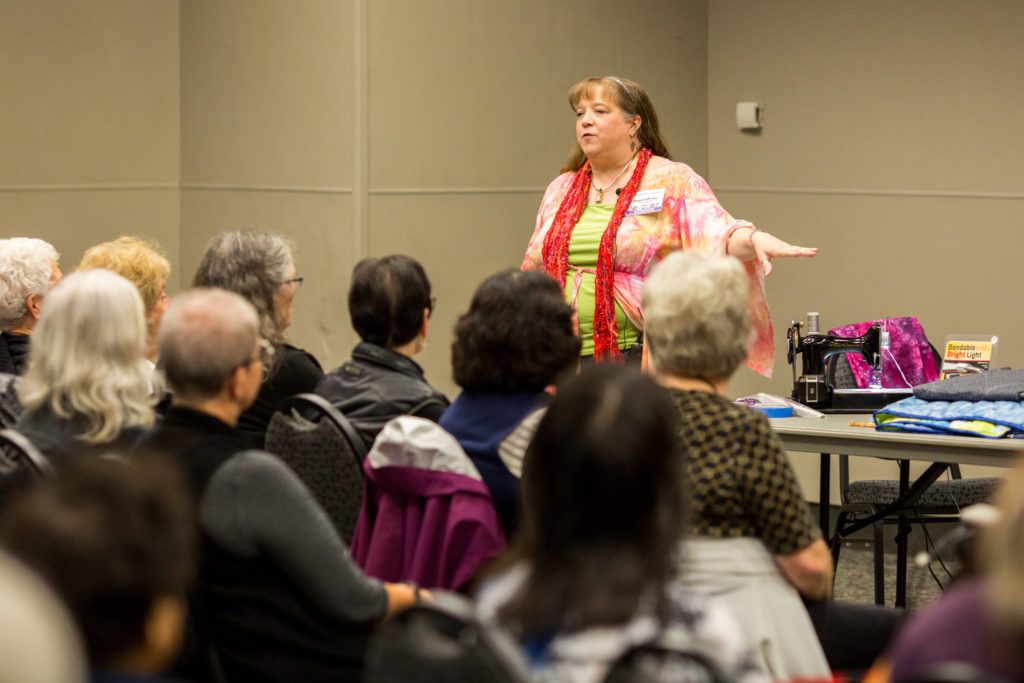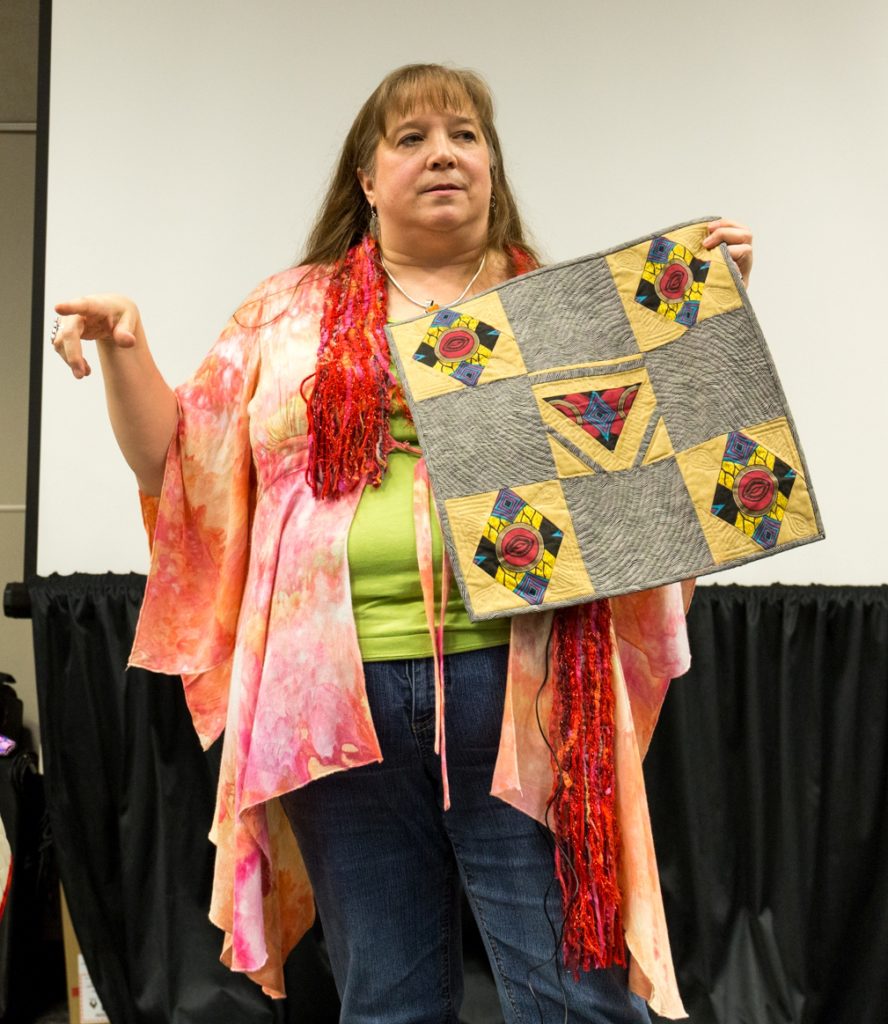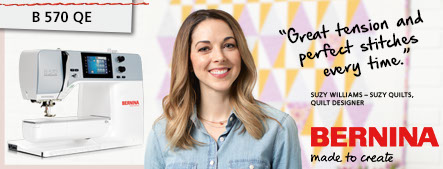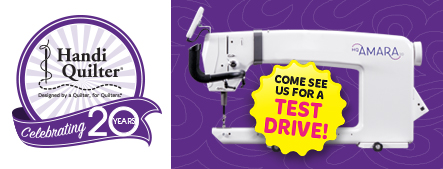Looking to begin or enhance your machine quilting skills?
Not sure if you want to use a domestic or longarm machine for your quilting?
Curious about the Bernina brand?
Road to California 2018 is offering three machine quilting classes taught by Sue NIckels where students get to experiment with both a Bernina domestic sewing machine and the Bernina Q-20, a sit down longarm machine.
Monday: 1011C Machine Quilting Essentials 
Tuesday: 2011C Freemotion Focus on Fillers Wednesday: 3080C Masterclass on Feathers
Wednesday: 3080C Masterclass on Feathers 
Sue Nickels will be traveling to Road to California from Ann Arbor, Michigan. She has taught quilting on quilting cruise to Norway (which included a stop in the Arctic Circle!) and on a cruise that had stops in South Korea, China and Japan. She has also taught classes for Quilts Dubai in the United Arab Emirates as well as in New Zealand and Australia. Sue and her sister, Pat Holly, are in their 4th year leading the annual Hollygirls Quilt Retreat each fall. They took over for Gwen Marston’s Beaver Island Quilt Retreats when she retired in 2013. Sue loves the history of quilts and quilting and is “very inspired” by antique quilts- especially the appliqué quilts of the 1800’s. She is also inspired by her international travels and textiles from around the world.
]]>
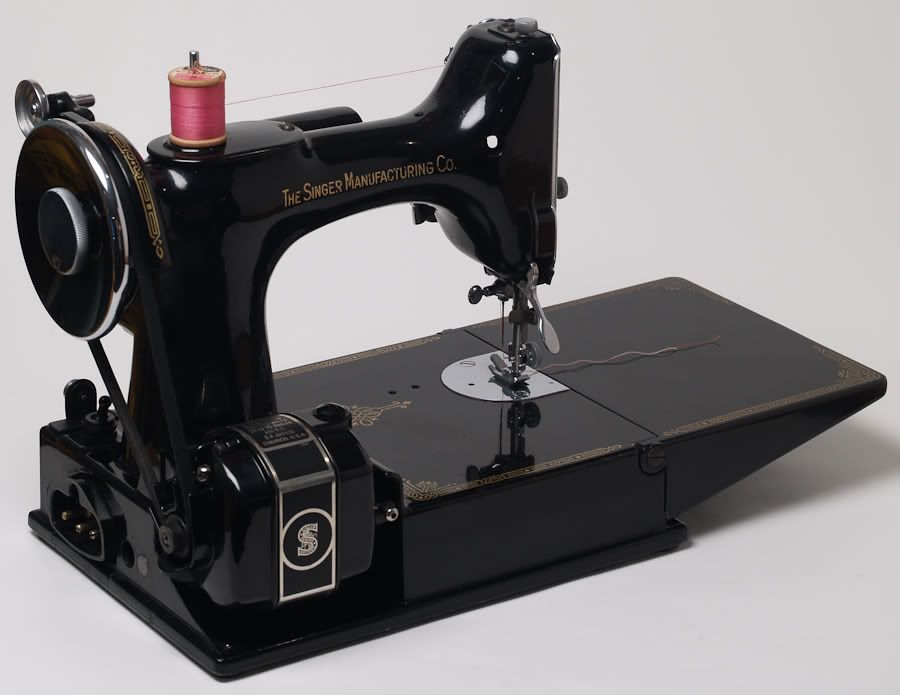 At Road 2017, Jennifer O’Brien from Sew Craft taught a $5.00 Lecture Class, Machine Quilting on your Featherweight. The first thing that the students learned was, yes, you can machine quilt using the small but mighty Featherweight. In fact, the principles are similar to any machine quilting project.
[caption id="attachment_4904" align="aligncenter" width="625"]
At Road 2017, Jennifer O’Brien from Sew Craft taught a $5.00 Lecture Class, Machine Quilting on your Featherweight. The first thing that the students learned was, yes, you can machine quilt using the small but mighty Featherweight. In fact, the principles are similar to any machine quilting project.
[caption id="attachment_4904" align="aligncenter" width="625"]